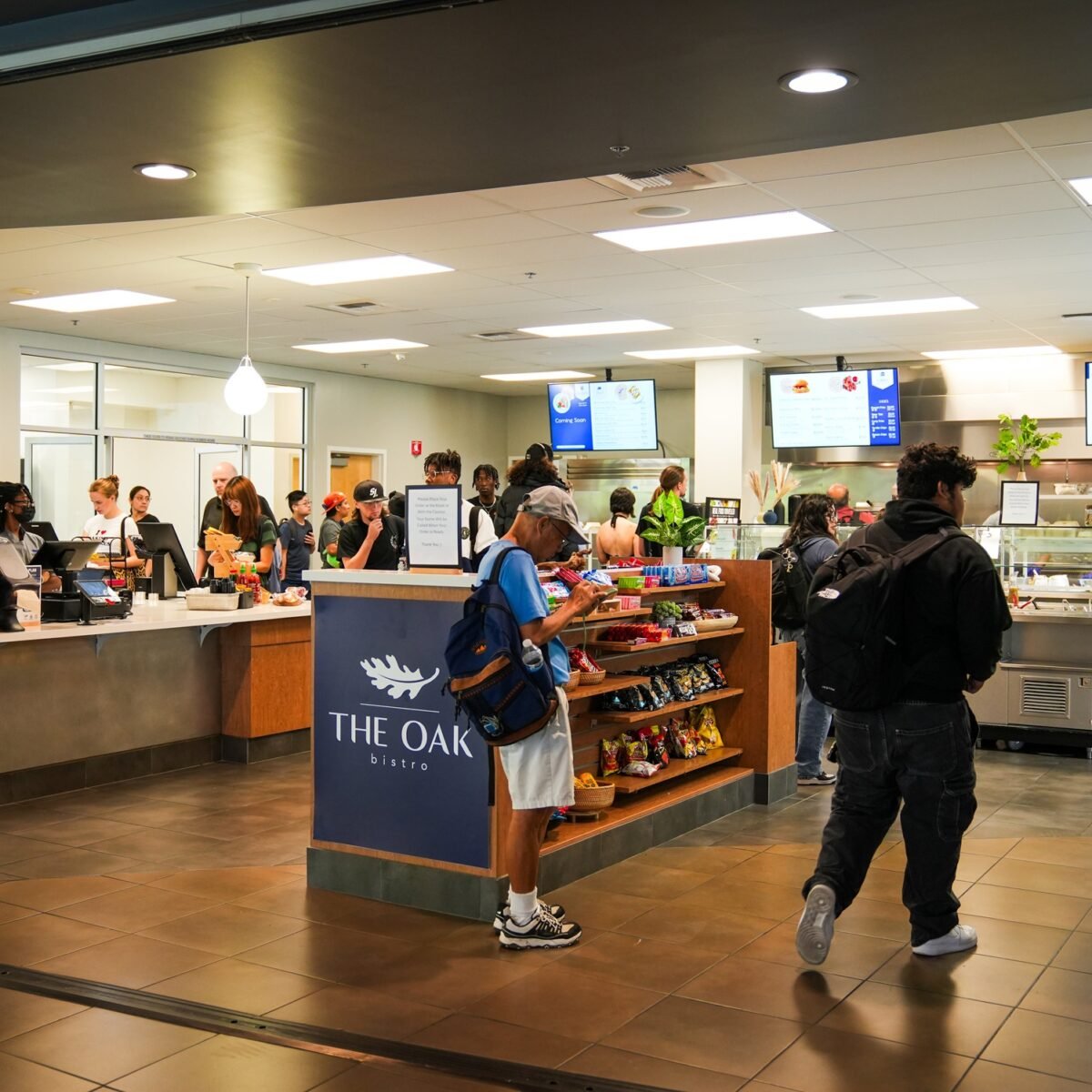Every in-person student enrolled in at least six units receives a meal card through the program that replenishes every Monday with a balance ranging from $30 to $60, depending on need. The balance can be used to purchase a freshly made meal from the cafeteria run by food service management company Thomas Cuisine. Students can also purchase snacks and coffee from vending machines and on-campus cafes.
“I have been a huge fan of the poké bowls,” Cuevas said. “It tastes really, really good … I’ve also heard some really good reviews about the Greek salad.”
Any unused funds each week expire on Sunday night.
The district celebrated the launch of the program and both colleges’ newly renovated cafeterias at ribbon-cutting ceremonies this week.
Davis estimates the program will cost about $2.5 million annually and said local property taxes will fund it.
The meal program has already served over 22,000 meals to students in its first two weeks, according to Davis.
“Given the advent of this new meal plan, our new coffee shops and our cafeterias have become jam-packed with students,” Davis said. “The other day I went over to sample the food in the cafeteria, and I could not find a single seat to sit down with students.”
Davis said the free meal program is not a direct response to federal cuts to food nutrition programs like the Supplemental Nutrition Assistance Program. However, “the timing is fortuitous given that there will be greater numbers of community members who are wrestling with food insecurity.”
Cuevas, who works as director of marketing at the Associated Students of West Valley College, said she and her peers are excited about the program and already using the funds to snack on coffee, apples, bananas and curly fries.
“We’re constantly inside of the office just snacking on everything from the cafeteria,” she said. “It’s good to know that we have full stomachs and we’re able to get a lot more work done.”
KQED’s Gilare Zada contributed to this report.





